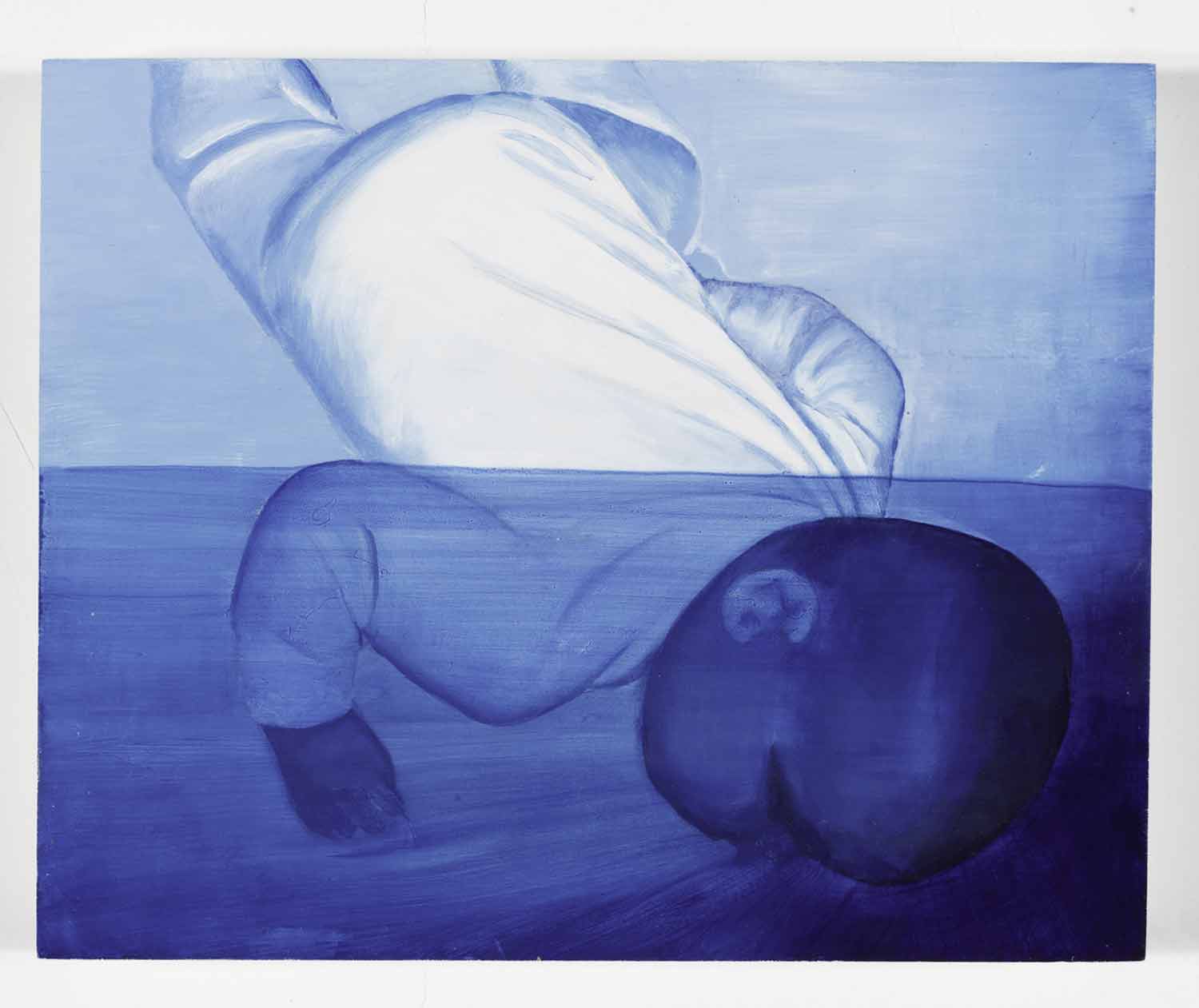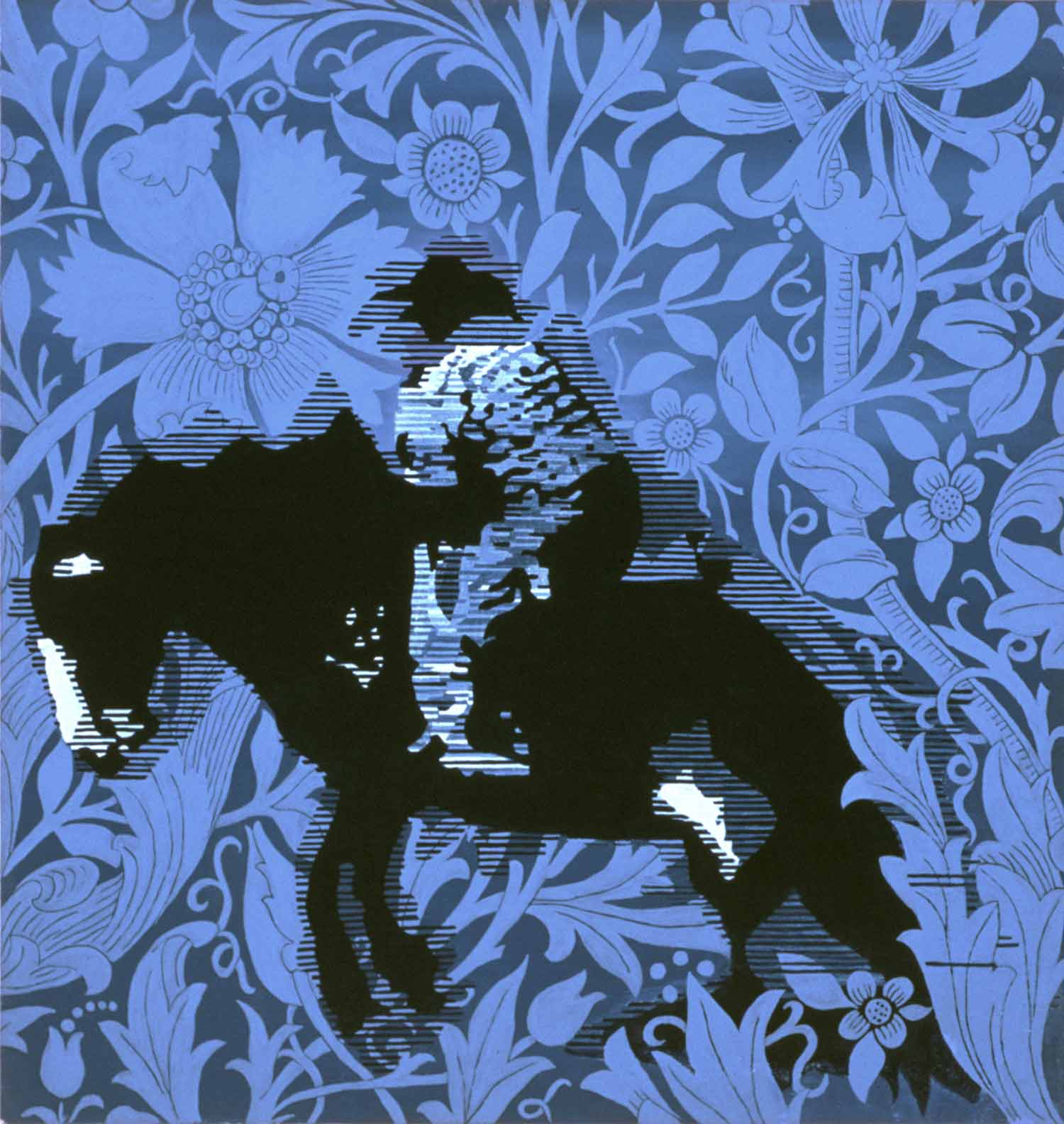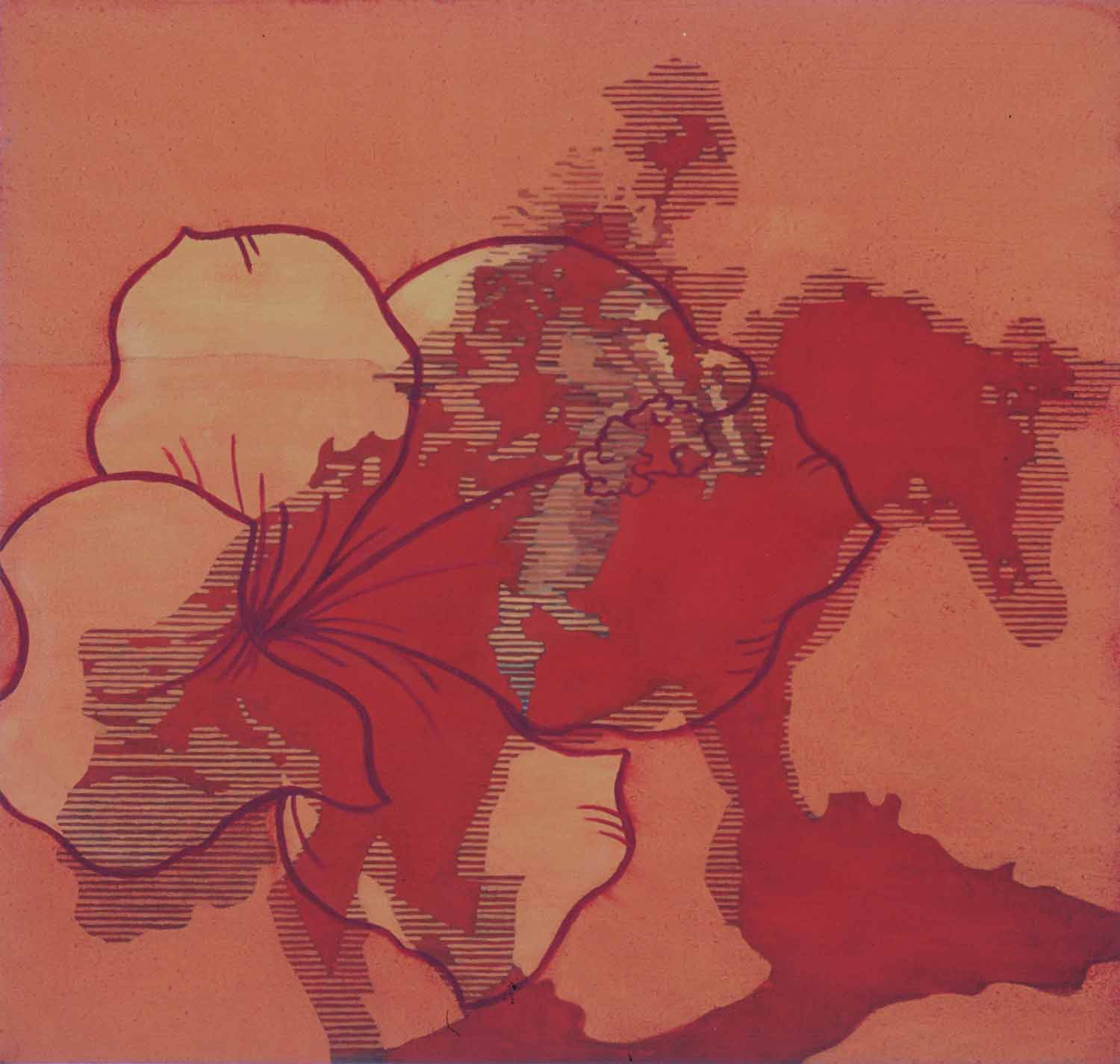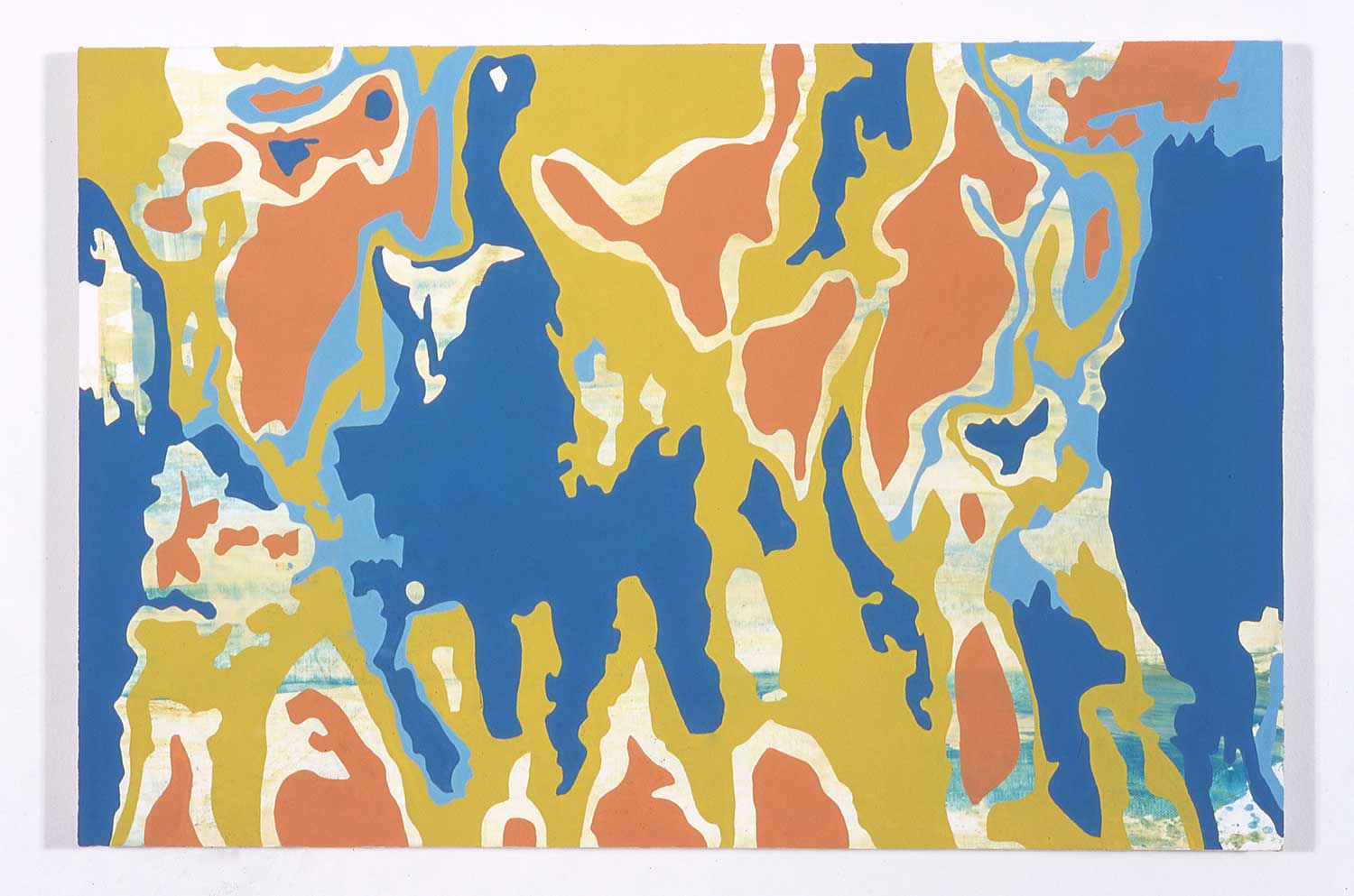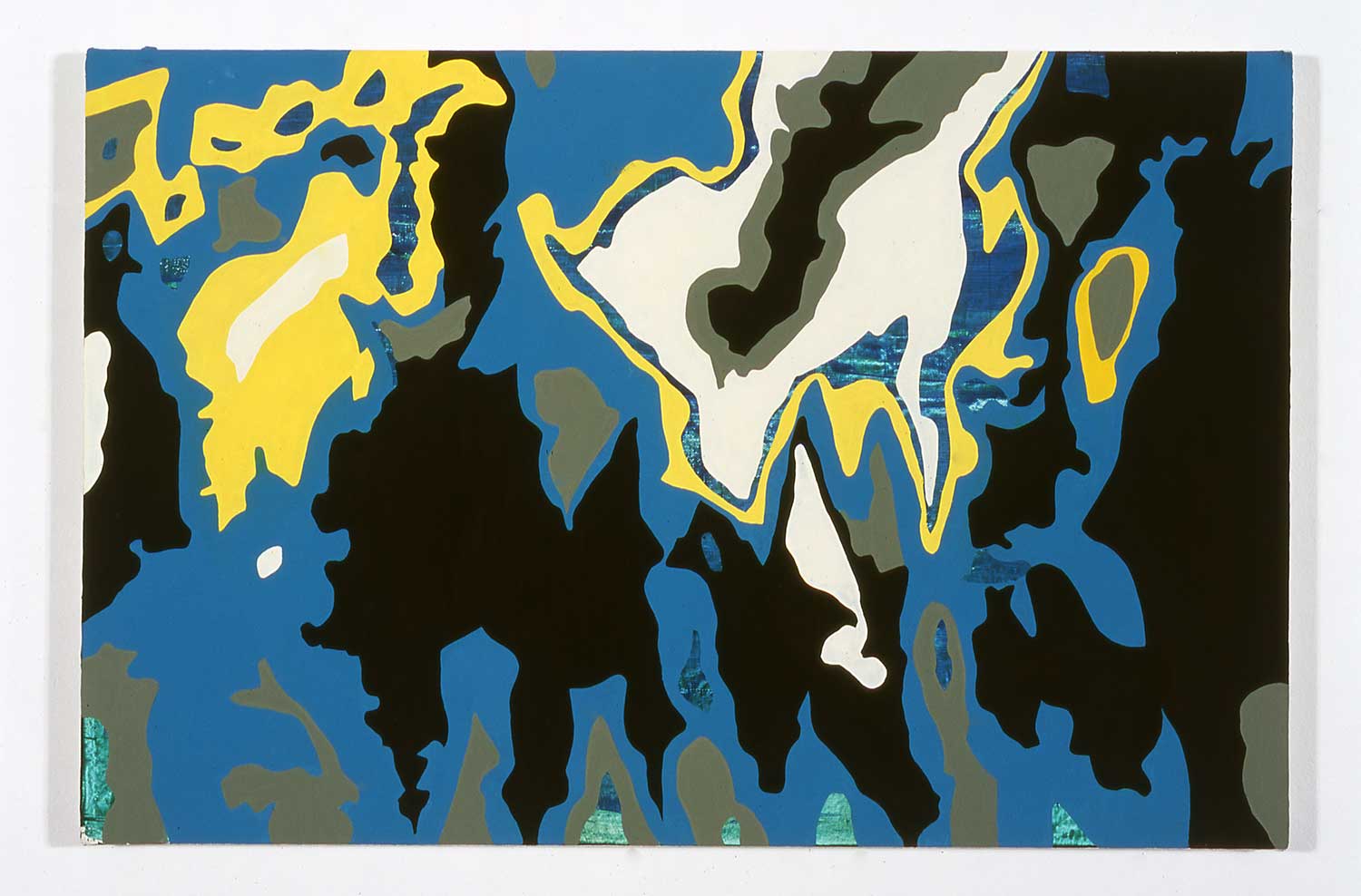At first glance, In Continued Conversation with a Deceased Artist appears to be pure abstraction. Organic forms nest and expand into others, seed and grow from various points on the surface. However, the complexities of abstract forms serve to indicate a connection with something deeper. These are not the purely invented abstractions of Kandinsky, nor are they the reductive forms of Mondrian or Halley. In Continued Conversation with a Deceased Artist is processed abstraction. One second of film is extracted and expanded into twenty-nine individual paintings and then those paintings are animated back into video. An intimacy is created between filmmaker, painter and animator, establishing an extended and laborious process to reflect upon the filmmaker's original vision. I am acting as an interpreter, breaking down one language and reconstructing it in another, holding the sense of the structure together with my understanding of both. Like the child's game of "telephone", something is lost and something is gained in translation. Gone is the sense of realism, and with it, the illusion of life. What remains is a sense of forms that have passed through space, that the surface of the animation, at least for a moment, was insistent on noting the world's physicality. In Continued Conversation with a Deceased Artist is a séance of sorts; a dialogue with a ghost. The formal languages of painting and animation are used to converse with the deceased filmmaker, my grandfather. Some topics cannot be broached through words and are lost to time due to age, gender, generational gaps in understanding, and, finally, death. The artifact left to mine is the urge to create art. I try to see through the filmmaker's eyes, attempting to gain understanding of what it was he was thinking, feeling, and experiencing. The process of translating between film, painting and video animation is wish fulfillment, an attempt to establish a common thread between grandfather and granddaughter.





































